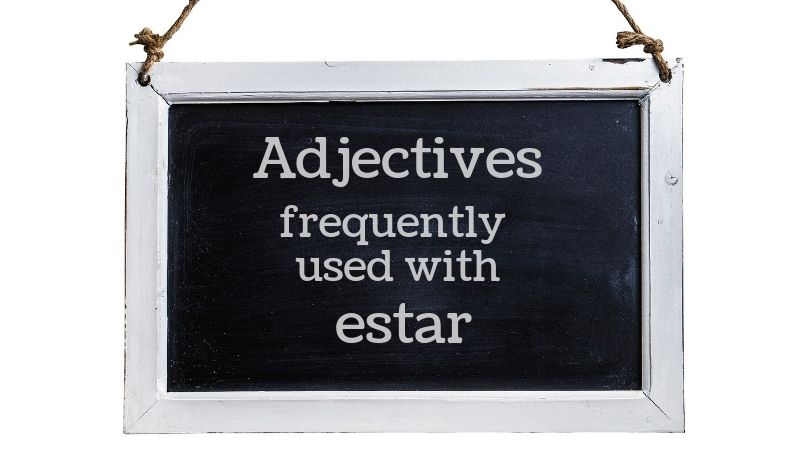In this lesson, we’ll study a few dozen adjectives that are frequently used with the verb ESTAR. Consider that estar is the more temporary way of expressing “to be” in Spanish. Click here for a thorough review on when to use estar. The more permanent “to be” is ser. Both verbs are frequently followed by adjectives which describe a person or a thing. Estar adjectives tend to describe the temporary condition, position or state of a person or a thing (busy, tired, hot). Adjectives that follow ser, on the other hand, tend to describe qualities and characteristics of people and things that are more permanent or unlikely to change (interesting, tall, lazy). Click here for a thorough review of the difference between ser and estar.
ESTAR Adjectives that Describe People
| aburrido, a | bored |
| avergonzado, a | embarrassed |
| bien | well / ok / fine |
| casado, a | married |
| cansado, a | tired |
| cierto, a | certain |
| confundido, a | confused |
| contento, a | happy / content |
| de pie | standing |
| disponible | available |
| embarazado, a | pregnant |
| emocionado, a | excited |
| enfermo, a | sick / ill |
| enojado, a | upset / angry |
| estresado, a | stressed (out) |
| frustrado, a | frustrated |
| furioso, a | furious |
| listo, a | ready |
| loco, a | crazy |
| muerto, a | dead |
| nervioso, a | nervous |
| ocupado, a | busy |
| orgulloso, a | proud |
| preocupado, a | worried |
| preparado, a | prepared |
| relajado, a | relaxed |
| satisfecho, a | satisfied |
| seguro, a | sure |
| sentado, a | seated |
| triste | sad |
| vivo, a | alive |
Adjective Agreement by Gender & Number
You probably noticed that for most of the adjectives in the above list, there is a masculine version of the adjective that ends with “o” and also a feminine version that ends with “a.” The ending you need to use will depend on who or what you’re describing. To say “the man is alive,” you’ll say;
El hombre está vivo.
To say “the woman is alive,” on the other hand, you’ll say;
La mujer está viva.
It’s as simple as that. This is called “adjective agreement.” The adjective must take on the same gender as the subject it describes. This is something we never have to think about in English. There is only one version of every adjective in English. A man is “alive” and a woman is “alive.”
Gender Neutral Adjectives
You’ll notice from the list, however, that there were a few adjectives that don’t end with “o” or “a.” These are what we call “gender-neutral adjectives.” Whether they’re describing a man or a woman, a boy or a girl, there’s only one way to express them. Bien is a good example;
El niño está bien (the boy is fine)
La niña está bien (the girl is fine)
Other gender-neutral adjectives from the list include disponible (available) and triste (sad). Let’s go ahead and complete a quick and easy exercise to make sure you understand this concept of adjective agreement.
I just completed an exercise where I learned that Spanish adjectives must have the same gender as the noun they describe. | LESSON: Adjectives Frequently Used with ESTAR Click To TweetLet’s do another multiple choice exercise. This time around, you’ll have four options to choose from. Only one is correct. This will test and reinforce your memory of the adjectives listed above. Remember to consider the gender of the person the adjectives are describing.





Leave A Comment